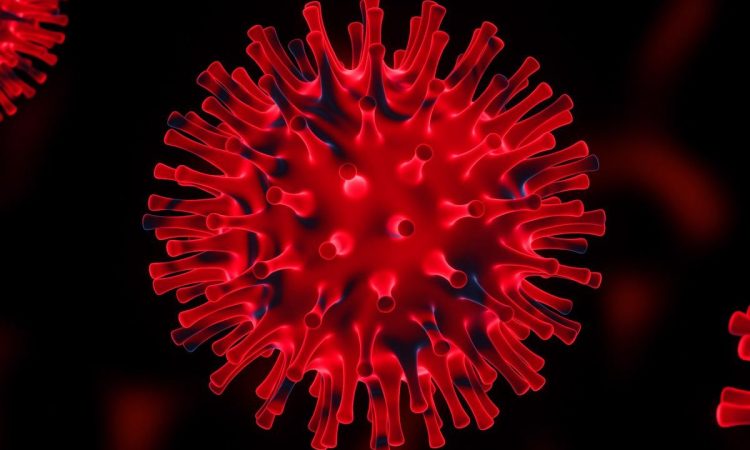A new study published in the medRxiv* preprint server found that the Omicron variant contains a number of mutations that decrease neutralizing antibody activity and immune escape. However, a third dose of either mRNA vaccine increased antibody binding and protection against Omicron. Omicron differs from previous severe acute respiratory syndrome coronavirus 2 (SARS-CoV-2) variants because it does not promote syncytial fusion and infects cells via an endosomal entry route.
 Study: The hyper-transmissible SARS-CoV-2 Omicron variant exhibits significant antigenic change, vaccine escape and a switch in cell entry mechanism. Image Credit: Kavic.C/Shutterstock
Study: The hyper-transmissible SARS-CoV-2 Omicron variant exhibits significant antigenic change, vaccine escape and a switch in cell entry mechanism. Image Credit: Kavic.C/Shutterstock
Mutational changes in the spike protein
The Omicron variants contain numerous mutations on the receptor-binding domain (RBD) of the spike glycoprotein, on regions targeted by different classes of RBD-directed antibodies, and within the N-terminal domain (NTD) supersite.
Through a deep mutational scan, the researchers found sites containing mutations were more likely to have lower monoclonal and polyclonal antibody binding. Additionally, the mutations altered binding with the human ACE2 protein. A total of 14 mutations were predictive for evasion or decreased antibody binding, including seven Omicron-specific mutations on the RBD.
Spread of Omicron
In less than a month, the Omicron variant superseded the Alpha and Delta variants as the dominant SARS-CoV-2 variant of concern. Despite high vaccination rates and naturally-acquired immunity across the population, Omicron has caused a surge of infections and reinfections in vaccinated and unvaccinated individuals.
The first 8 Omicron cases in the United Kingdom occurred in the last week of November. The first 10 days of the Omicron outbreak brought 111 new COVID-19 cases in Scotland. Genetic sequencing revealed that the Omicron variant evolved to have about 1 to 7 single nucleotide polymorphisms.
Two dose vaccines less effective in neutralizing Omicron
Donated serum samples from vaccinated individuals showed a correlation between vaccination and neutralizing antibody protection. However, decreased antibody levels were associated with reduced vaccine effectiveness.
The researchers extended these findings by investigating vaccine effectiveness against the Omicron variant. People vaccinated with either of the mRNA vaccines showed greater antibody responses to SARS-CoV-2’s RBD and NTD compared to individuals immunized with the AstraZeneca vaccine.
The Moderna vaccine showed the highest neutralizing antibody titers compared to antibody titers produced from either the Pfizer-BioNTech or AstraZeneca vaccine.
Nevertheless, the researchers observed a significant drop-in neutralizing activity against the Omicron variant. Specifically, Omicron caused a 33-fold drop in neutralization from the Pfizer-BioNTech vaccine, a 14-fold drop for the AstraZeneca vaccine, and a 74-fold drop for Moderna.
Booster shots reverse waning immunity
Without the booster, the two-dose AstraZeneca shots had negligible vaccine effectiveness against Delta and only 16% against Delta.
Two doses of the Pfizer-BioNTech shots produced a 6.84% vaccine effectiveness against Omicron and 56.53% protection against Delta. Moderna vaccines produced an 8.83% vaccine effectiveness against Omicron and 60.07% vaccine effectiveness against Delta.
Booster shots increased neutralizing activity against Omicron. A third dose of the Pfizer-BioNTech vaccine increased vaccine effectiveness to 91.87% against Delta and 67.57% against Omicron. A third dose of the Moderna vaccine increased vaccine effectiveness to 89.28% against Delta and 71.15% against Omicron.
Omicron does not cause cell syncytia
Viruses can promote syncytial formation, which is when infected cells fuse together with nearby cells to form enlarged and abnormal cells. The Alpha and Beta variants have been shown to induce syncytia. The researchers studied cell fusion in cells infected by Omicron, Delta, and the original SARS-CoV-2 strain. Results showed that Delta had the highest levels of cell fusion with the original Wuhan strain coming in second. However, researchers were surprised to see that Omicron did not induce cell fusion, despite confirmed viral infection in cells. Omicron also showed low viral replication in the lungs — a magnitude lower than Delta and the Wuhan strain.
Omicron's mechanism of action
SARS-CoV-2 entry into host cells can occur through cell surface fusion after proteolysis by TMPRSS2 or fusion of the endosome after endocytosis and activation of endosomal proteases. Prior SARS-CoV-2 variants tend to follow the cell surface fusion option, which is consistent with high levels of TMPRSS2. In cultured cells that support cell surface fusion, Delta caused approximately four-fold higher infections than Omicron.
Omicron achieved higher infection rates — 10-fold more than Delta — in HEK cells, which primarily supports endosomal entry. Further evidence was seen when cells treated with inhibitors for endosomal entry were resistant against Omicron infection.
*Important notice
medRxiv publishes preliminary scientific reports that are not peer-reviewed and, therefore, should not be regarded as conclusive, guide clinical practice/health-related behavior, or treated as established information.
- Willett BJ, et al. (2022). The hyper-transmissible SARS-CoV-2 Omicron variant exhibits significant antigenic change, vaccine escape and a switch in cell entry mechanism. medRxiv. doi: https://doi.org/10.1101/2022.01.03.21268111 https://www.medrxiv.org/content/10.1101/2022.01.03.21268111v1
Posted in: Medical Science News | Medical Research News | Disease/Infection News
Tags: ACE2, Antibodies, Antibody, Cell, Coronavirus, Coronavirus Disease COVID-19, covid-19, Genetic, Glycoprotein, immunity, Lungs, Nucleotide, Omicron, Polyclonal Antibody, Protein, Receptor, Respiratory, SARS, SARS-CoV-2, Severe Acute Respiratory, Severe Acute Respiratory Syndrome, Single Nucleotide Polymorphisms, Spike Protein, Syndrome, Vaccine

Written by
Jocelyn Solis-Moreira
Jocelyn Solis-Moreira graduated with a Bachelor's in Integrative Neuroscience, where she then pursued graduate research looking at the long-term effects of adolescent binge drinking on the brain's neurochemistry in adulthood.
Source: Read Full Article
